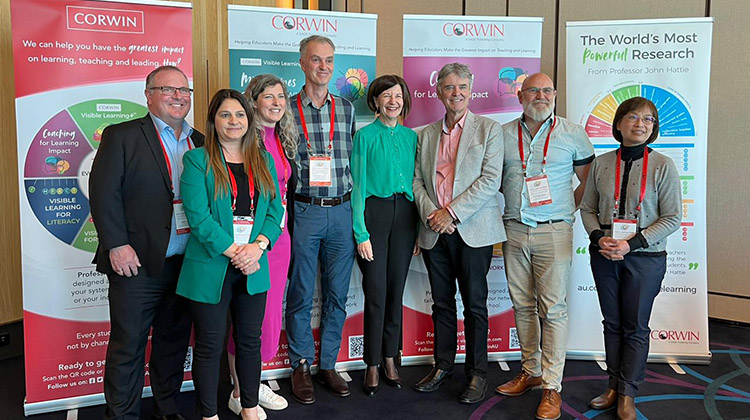Hattie's Visible Learning... 13 Years On...

It is hard to believe that Professor John Hattie’s Visible Learning research was first published 13 years ago. There have been more than 1,300 new meta-analyses he has added to the data base, and the VL+ model has been implemented in thousands of classrooms.
The lock downs during the pandemic provided Hattie with the time and inclination to review the visible learning key messages and what has emerged from the review is that the message of, “know thy impact,” continues to be central to the Visible Learning message.
In a recent keynote address at the Corwin Conference (12–13 September 2022, Sydney), Hattie also shared how the conclusions drawn from the research 13 years ago have evolved 13 years on.
| Conclusions from 13 years ago | And 13 Years on |
|
1 Teachers have the greatest in-school impact on students |
1 The importance of clarity about purpose including: 2 Teacher and student collective efficacy |
(Table summary used with permission: Hattie (2022) Corwin Conference 12-13 September. Sydney)
Hattie notes that the research and his thinking on visible learning has particularly evolved around clarity about purpose. This purpose, seeing impact through the eyes of students, enabling students to become their own teacher,and teachers becoming their own students is influenced by the mindframes of educators who think and act evaluatively to know their impact on student learning every moment of every day.
Ensuring intentional alignment between learning intentions, tasks, success criteria, feedback, activities, and assessments was also described by Hattie as a core need for educators to be able to do effectively during the design of any new learning. Clarity and coherence for learners will be negatively impacted if there is not intentional alignment.
Hattie also highlighted the importance of teacher and student collective efficacy – beliefs that by working with other people we will learn more. This is a powerful accelerator of student learning. Building collective efficacy, along with a more heightened awareness of the integral nature of the social and emotional attributes are core to learning.
The power of effective feedback unsurprisingly continues to be a key influence in the Visible Learning research however, 13 years the diversity of feedback has also been amplified. So much feedback is too hit-or-miss, and the key is to focus on the reception of feedback – was it heard, understood, and actioned. Students prefer feedback that leads to improvement and if they do not perceive improvement focused feedback they will say “I received no feedback”.
The sequel to Hattie’s 2008 Visible Learning Research will be available early in 2023 and with it an opportunity to explore in much more detail Hattie’s Visible Learning, 13 years on.
Visit www.visiblelearningmetax.com for the most up to date Visible Learning research findings.